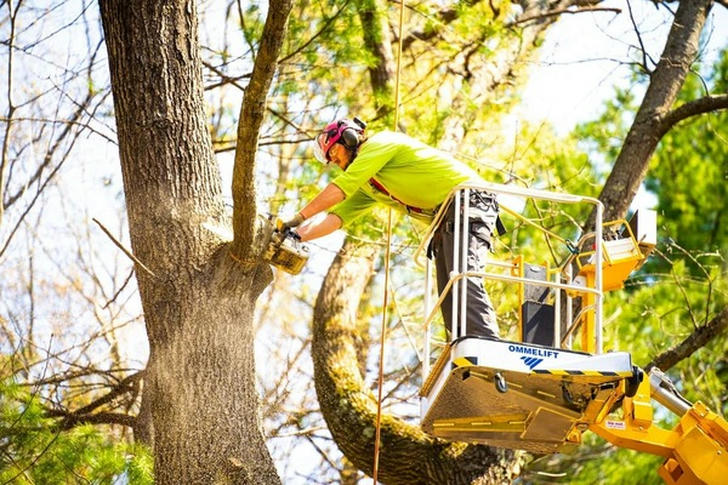The Art and Science of Tree Pruning and Felling in the United States
Trees are vital to America’s landscapes, offering ecological benefits, aesthetic value, and economic opportunities. However, maintaining healthy trees requires expertise in pruning and felling—a field that blends tradition, technology, and regulatory compliance. This article explores the intricacies of tree care in the U.S., including industry regulations, job opportunities, and real-world success stories that highlight the importance of professional arboriculture.

Regulations: Balancing Safety and Sustainability
In the U.S., tree pruning and felling are governed by local, state, and federal regulations designed to protect both people and ecosystems. For example, many cities require permits for removing trees with a trunk diameter exceeding 6 inches, even on private property. In California, homeowners must submit detailed applications to municipal offices, including photos of the tree and written consent from neighbors in some cases. These rules aim to prevent deforestation, preserve biodiversity, and mitigate risks like falling branches during storms.
In urban areas, trees near power lines or buildings face additional scrutiny. For instance, utility companies often collaborate with arborists to trim branches threatening electrical infrastructure, sometimes employing helicopters for precision work in remote locations. Such measures ensure public safety while minimizing environmental disruption.
Tree Pruning: Techniques and Best Practices
Pruning is not merely about aesthetics; it is a science that promotes tree health and longevity. Key principles include:
Timing: Winter or early spring—when trees are dormant—is ideal for pruning, as it reduces stress and prevents disease spread
Tool Selection: Professional-grade tools like pole saws and pruning shears ensure clean cuts, while disinfecting blades between trees avoids cross-contamination
Strategic Cutting: Removing deadwood, crossed branches, and water sprouts improves airflow and sunlight penetration, reducing the risk of fungal infections
A case study from New York City illustrates these principles in action. After Hurricane Sandy in 2012, arborists in Central Park conducted extensive pruning to remove damaged limbs and reinforce tree structures. This effort not only restored the park’s beauty but also enhanced storm resilience for future events
Tree Felling: Innovation Meets Tradition
While chainsaws remain a staple, modern felling has evolved with technology. In Oregon’s timber industry, companies use "anchor chain sawing," where heavy machinery drags anchored chains through tree clusters to clear large areas efficiently 6. For urban settings, firms like West Coast Tree Care in Seattle employ cranes and rigging systems to dismantle trees piece by piece, avoiding damage to nearby homes.
Safety is paramount. Certified arborists assess tree lean, wind direction, and escape routes before cutting. In a 2023 project in Colorado, a team prevented disaster by redirecting a 100-foot pine away from a historic cabin using tension ropes and wedges—a maneuver documented in industry training programs.
Career Opportunities in Arboriculture
The demand for skilled arborists is growing, driven by climate concerns and urban expansion. Key roles include:
Certified Arborists: These professionals diagnose tree diseases, design pruning plans, and oversee removals. Certification through the International Society of Arboriculture (ISA) is often required, with salaries ranging from $45,000 to $75,000 annually.
Urban Forestry Technicians: Municipalities hire these specialists to manage public trees, ensuring compliance with local ordinances.
Wildland Firefighters: In fire-prone states like California, crews conduct preventive felling to create firebreaks, a critical job highlighted during the 2020 wildfire season.
Apprenticeships and vocational programs, such as those offered by the Tree Care Industry Association (TCIA), provide pathways into the field. For example, GreenWorks Tree Service in Texas partners with community colleges to train workers in climbing, rigging, and equipment operation .
Success Stories: Real-World Impact
Reviving a Historic Orchard (Michigan):
In 2024, a team restored a 19th-century apple orchard by selectively pruning diseased limbs and grafting heirloom varieties onto healthy rootstocks. The project, funded by a state heritage grant, now supplies fruit to local farmers’ markets and serves as an educational site .
Emergency Response in Florida:
After Hurricane Ian, Sunshine Tree Experts removed 500+ downed trees in Naples using cranes and wood chippers. Their rapid work restored power lines and roads within days, earning commendations from FEMA .
Urban Green Infrastructure (Chicago):
The Chicago Tree Initiative planted 10,000 drought-resistant trees in underserved neighborhoods between 2020 and 2024. Regular pruning by ISA-certified crews has boosted survival rates to 95%, cooling streets and reducing energy costs .
Challenges and Future Directions
Climate change poses new hurdles, such as invasive pests like the emerald ash borer, which has killed millions of trees. Proactive pruning and targeted removals are essential to curb infestations. Meanwhile, startups like Canopy Drones are testing AI-powered tools to map tree health and prioritize maintenance—a innovation piloted in Portland in 2024 .
Public education also plays a role. Nonprofits like Arbor Day Foundation offer workshops on home tree care, empowering residents to identify hazards and practice sustainable pruning .
Conclusion
Tree pruning and felling are more than technical tasks; they are acts of stewardship that shape America’s environmental and economic future. From high-tech felling in Oregon’s forests to community-driven planting in Chicago, professionals in this field exemplify the balance between human needs and ecological preservation. As climate challenges intensify, their expertise will remain indispensable—a testament to the enduring value of skilled, passionate arboriculture.
